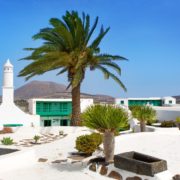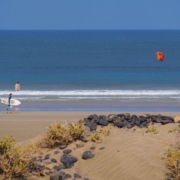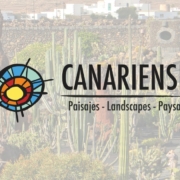In Part Two of the interview we carried out with Cabildo President Oswaldo Betancort in May we address the hot topics of tourism and housing.
Last year, Lanzarote had more tourists and residents than ever before. How long can the island continue to grow?
The focus should not be on the number of tourists, but on the quality of the destination. Uncontrolled growth puts pressure on basic services such as housing, healthcare, and infrastructure. This debate is not exclusive to Lanzarote; it’s present in every successful tourist destination around the world. Therefore, the important thing is to take action – not just worry – by equipping ourselves with the legal and governance tools to manage this growth sustainably.
What is your response to the criticisms of the Canarias Tiene Un Límite and their demands for “conservation of natural spaces and an eco-tax, a tourism and holiday moratorium… regulation of home purchases by foreigners, and a Residency Law”?
All of these issues are currently on the table in the islands and other tourist areas. There is talk of taxation and eco-taxes, and there are already concrete examples: Teide National Park in Tenerife will charge for access, for example, and in Lanzarote, areas such as the Tourist Centers or Papagayo have operated payment scheme for their preservation for years. Regarding the regulation of home purchases by foreigners, this is also being discussed in various forums. Furthermore, the Canary Islands and Lanzarote are fragile and limited areas, so I believe it is also time to move forward with the debate on a Residency Law. We cannot ignore these demands, but rather work on formulas to address them, ensuring that the decisions made have the widest possible reach and consensus.
Tourists are now more independent than ever, resulting in increased visits to places like Las Grietas and Los Charcones. After the loss of unofficial attractions like the Palmera Inclinada (Leaning Palm Tree) and the “Sphinx” of Teseguite, is it time to re-evaluate Lanzarote’s list of tourist attractions that require protection?
It’s not a question of re-evaluation – places with high natural, archaeological, or heritage value are already clearly identified. The real challenge is to better protect these places, especially now that Places such as Las Grietas and Los Charcones, and others that have recently gained popularity, are now experiencing the kind of pressure that requires control mechanisms to be reinforced.
Lanzarote has already begun to act on this: the Biosphere Reserve’s team of rangers has been expanded, and skills are being improved to ensure conservation. Furthermore, penalties have been stepped up in sensitive areas such as Las Grietas, not just because of their environmental value but also for the safety of residents.
In addition, Lanzarote Tourism is developing an Awareness Strategy for Ethical and Responsible Tourism. This initiative seeks to promote appreciation and respect towards Lanzarote and La Graciosa, with the collaboration of various departments of the Cabildo and the Lanzarote Art, Culture, and Tourism Centres.
Can the Cabildo do anything to alleviate the housing crisis?
First of all, I have to say that housing is primarily the responsibility of the Spanish government, and it is clear to everyone that the legal uncertainty faced by homeowners is the main obstacle preventing them from renting out their homes.
On the islands, although direct powers fall under the Government of the Canary Islands, the Cabildo has adopted a proactive stance in the fight for access to decent housing. During this term, we have invested more than €15 million in the purchase of plots of land and ready-built homes, and we have ceded public land in Arrecife and Uga for the construction of affordable rental housing.
This government has also acquired 42 homes in Playa Blanca for affordable rentals, and projects are currently underway in neighbourhoods such as Maneje, Arrecife where 201 subsidized homes will be built – the first to be built on the island in almost three decades. We are also working on a line of direct subsidies worth €2.2 million for those seeking housing, with a special focus on young people. In addition, we are spearheading measures to contain tourism growth, removing more than 100 illegal vacation homes from the market and promoting a Law on Sustainable Management of Tourist Housing Use. We have also asked the Arrecife City Council to consider permitting extra height in certain residential areas, allowing families looking to expand their homes to accommodate the next generation. In short, although the main responsibility is not ours, the Cabildo is using all available resources to decisively address the housing emergency.











Leave a Reply
Want to join the discussion?Feel free to contribute!